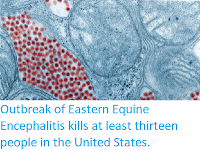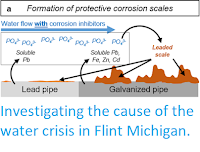A water leak that began spouting from a freeway in Detroit, Michigan, has been shown to contain high levels of hexavalent chromium Chromium (VI). The leak, which is poring onto the I-696 in Madison Heights, and which has prompted local authorities to close one lane of the freeway, is producing water with a distinctive bright green colour, to the alarm of local communities. Now tests by the Michigan Department of Environment, Great Lakes, and Energy have shown that water samples taken from the leak contain 140 μg per litre of hexavalent chromium, higher than the U.S. Environmental Protection Agency's recommended maximum of 100 μg per litre total chromium, which is generally assumed to be mostly the less toxic trivalent chromium (Chromium III). The World Health Organisation recommends total chromium should not exceed 50 μg per litre. A maximum Chromium (VI) level of 10 μg per litre has been legislated for
in the State of California (the only state to specifically address the issue to date)
and has adopted a long term public health goal of reducing levels to
0.02 μg per litre in all drinking water in the state.
A greenish-yellow liquid flows through a retaining wall on I-696,
triggering a lane closure and haz-mat clean-up on the afternoon of Friday 20 December 2019. Michigan Department of Transportation.
The site of the leak is beneath a former metal-plating factory, which is thought highly likely to be responsible for the liquid that migrated onto the freeway. The U.S. Environmental Protection Agency now plans to carry out extensive testing at the site, with a view to determining the extent of the contamination and environmental remediation needed, and is highly likely to take legal action against the site's owners, Electro-Plating Services.
Chromium is a moderately common transition metal; that is to say an
elemental metal with atoms that can have different electrical
configurations (valencies) enabling it to exhibit different chemical
properties when forming bonds with other atoms. The most common form of
chromium in the environment is trivalent chromium, however the rarer hexavalent chromium, or is sometimes
found in water, which is a
cause for concern as this form of chromium is recognised to be
carcinogenic to Humans (that is to say it can cause cancer in Humans).
See also...
Follow Sciency Thoughts on
Facebook.







